HIPAA Compliance Checklist for 2025

According to a Deloitte study, 87% of organizations have faced a disruptive incident with a key supplier in the past 24 months, underlining the need for robust supplier risk management software.
Vendor-related disruptions, whether financial, operational, reputational, or regulatory, can jeopardize your organization’s compliance posture, product timelines, or even customer trust.
Now let’s get to know about Supplier Risk Management Software, a powerful way to proactively mitigate vendor threats and strengthen your supply chain resilience.
In this blog, we’ll break down what supplier risk management software is, the benefits and features that matter, curated list of the top 9 tools for 2025 and how CloudEagle can enhance your compliance strategy
TL;DR
- Supplier risk management software helps identify, assess, and reduce vendor-related risks.
- Key benefits include enhanced compliance, financial risk reduction, and supply chain resilience.
- Look for features like continuous monitoring, compliance tracking, and proactive alerts.
- Tools like Sprinto, BitSight, OneTrust, and Vanta lead the market in 2025.
- CloudEagle.ai offers a robust solution that combines compliance automation and real-time monitoring.
What is Supplier Risk Management Software?
Supplier risk management software is a solution designed to identify, monitor, and mitigate risks associated with third-party vendors and suppliers. These tools provide real-time visibility into your supplier ecosystem, assess potential threats, ensure compliance with standards like ISO and SOC 2, and track performance anomalies.
Also known as supplier risk and performance management software, these tools are crucial for managing global supplier networks, especially as third-party risk becomes more prevalent in cloud-based and outsourced environments.
What are the Benefits of Supplier Risk Management Software?
Reduce Financial and Operational Risks
Supply disruptions, vendor insolvency, or data breaches can have a severe financial impact. Supplier risk management tools help forecast potential issues early by continuously analyzing your vendors' financial health, security posture, and delivery capabilities.
Improve Compliance and Audit Readiness
With regulations like GDPR, SOC 2, and ISO 27001 in play, compliance audit tracking and supplier risk management go hand-in-hand. These platforms automate compliance evidence collection, track policy adherence, and ease audit processes.
Enhance Supplier Performance
Supplier performance risk management software evaluates vendor SLAs, delivery quality, and collaboration metrics. This ensures underperforming vendors are flagged early and replaced or improved through corrective action.
Boost Supply Chain Resilience
Disruptions from geopolitical changes, pandemics, or natural disasters can cause ripple effects. Supply risk management solutions offer scenario planning and stress testing tools to prepare your business for contingencies.
Key Features to Look for in Supplier Risk Management Software
Risk Assessment Capabilities
Ensure the tool provides configurable risk matrices to evaluate multiple dimensions of vendor risk, financial, operational, cybersecurity, legal, and environmental.
Continuous Monitoring
Modern platforms offer continuous vendor monitoring, which gives real-time updates on changes in vendor status, compliance lapses, or data breaches using AI-driven alerts.
Compliance Tracking and Management
Look for integrations with frameworks like ISO, NIST, SOC 2, GDPR, and HIPAA. This enables you to automate compliance documentation and vendor risk scoring.
Proactive Risk Detection and Resolution
The software should offer built-in workflows to automatically escalate issues, assign resolution tasks, and track mitigation efforts, making your supplier risk mitigation strategy seamless and agile.
Top 9 Supplier Risk Management Software for 2025
Here’s a carefully selected list of top supplier risk management tools to consider for 2025, evaluated on features, usability, compliance support, and integration capabilities.
1. CloudEagle.ai
CloudEagle.ai is a next-generation procurement and supplier risk management software built for modern enterprises navigating SaaS sprawl, compliance complexities, and third-party risk exposure. It offers a unified platform that combines procurement automation, vendor management, risk intelligence, and compliance governance, making it an essential solution for finance, IT, and procurement leaders.
What sets CloudEagle apart is its ability to provide real-time visibility into vendor compliance and risk while streamlining contract workflows, renewals, spend tracking, and policy enforcement, all in one seamless interface. CloudEagle doesn't just monitor vendor risks; it mitigates them proactively through automation, data intelligence, and AI-driven insights.
Whether you're managing 50 vendors or 500, CloudEagle ensures your supplier ecosystem stays compliant, cost-efficient, and risk-resilient.
1. Automated Vendor Risk Assessment
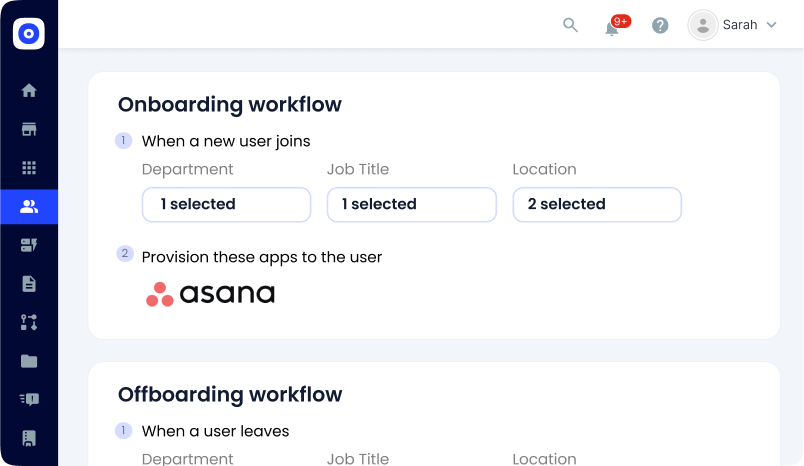
CloudEagle triggers comprehensive vendor risk evaluations at key lifecycle moments, onboarding, renewal, or contract changes. It automatically checks vendors against key benchmarks such as SOC 2, ISO 27001, financial viability, and compliance history. This proactive risk assessment prevents surprises, keeps procurement and security aligned, and ensures only trusted vendors enter your stack.
2. Real-Time Continuous Monitoring
\
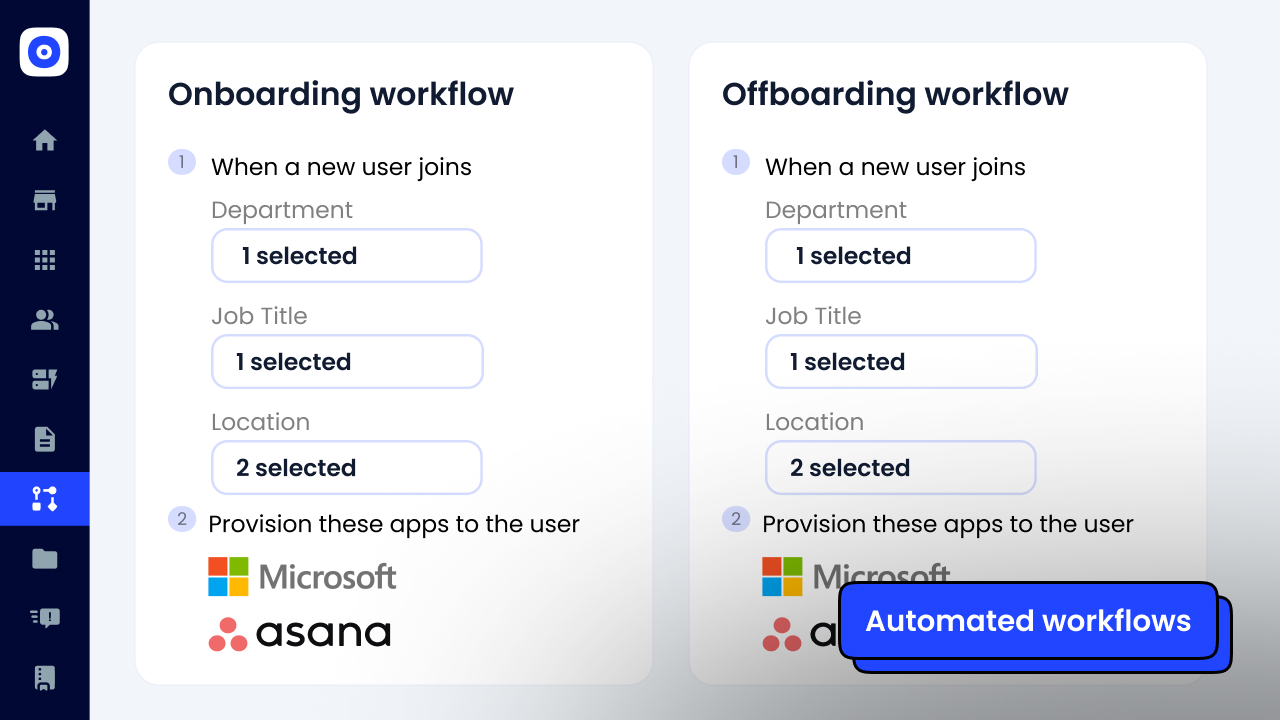
Stay ahead of vendor risks with always-on monitoring. CloudEagle instantly alerts you if a vendor’s certification expires, financials dip, or compliance standing shifts. This allows security and procurement teams to act fast, whether by freezing renewals, re-evaluating vendors, or triggering internal workflows, before risk becomes exposure.
3. Compliance Framework Integration
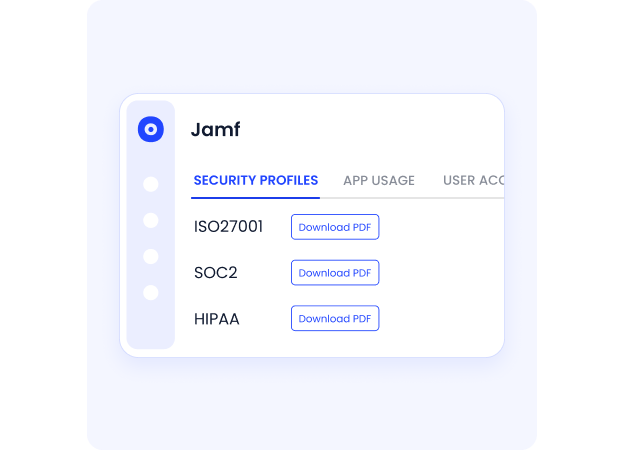
CloudEagle supports all major compliance & governance frameworks like ISO 27001, SOC 2, HIPAA, and GDPR out of the box. It automates compliance checks, audit readiness reporting, and helps ensure that third-party vendors align with internal and external regulatory mandates, dramatically reducing time and errors during audits.
4. Risk Intelligence Dashboard
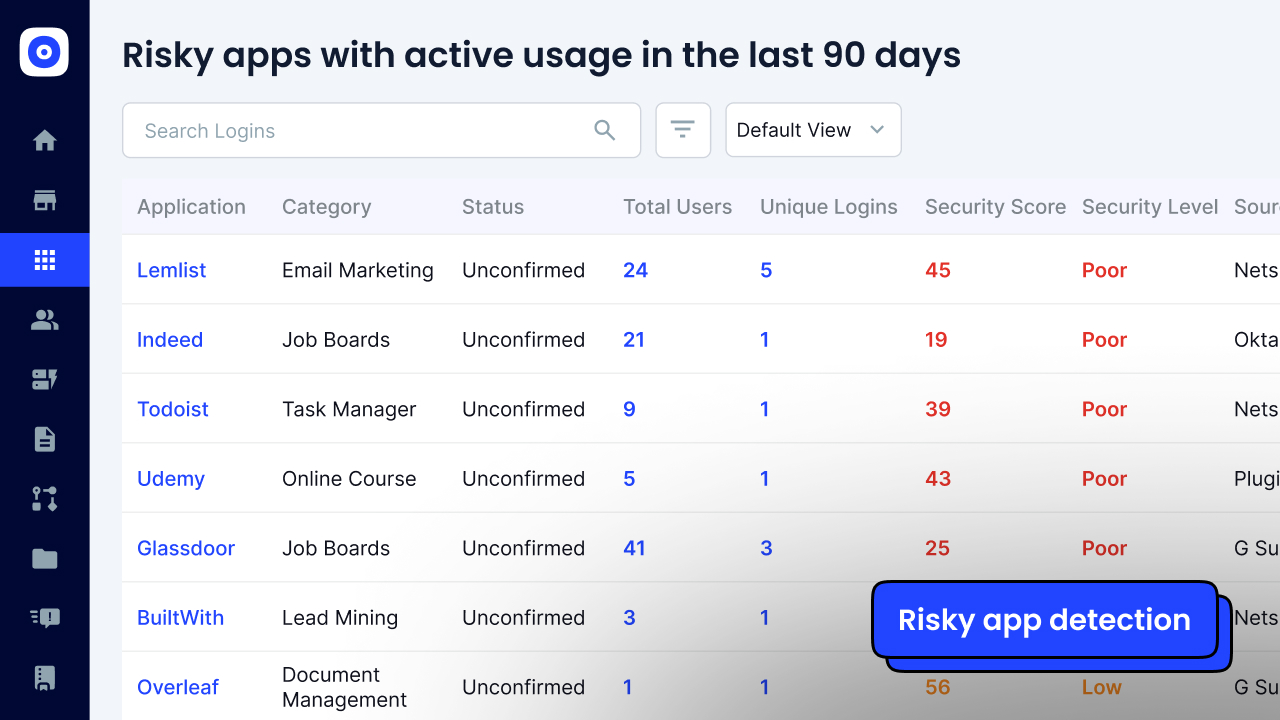
A centralized dashboard visualizes every vendor across multiple dimensions: risk level, compliance posture, renewal timelines, and spend allocation. With AI-curated risk flags and visual indicators, it enables cross-functional teams to prioritize actions, avoid blind spots, and support strategic decisions from a single source of truth.
5. Procurement & Contract Automation
Built-in procurement automation covers intake, approvals, renewals, and contract validations including UPLA enforcement. Teams can route requests through Slack or email, auto-populate vendor metadata, and track every workflow in audit-ready logs, cutting cycle times, reducing errors, and enhancing cross-departmental compliance.
6. AI-Powered Recommendations
CloudEagle analyzes app usage, contract terms, compliance ratings, and vendor performance to recommend smarter choices. Whether it’s identifying redundant tools, better pricing, or more compliant alternatives, the platform empowers AI procurement leaders to make decisions based on real-time intelligence, not guesswork.
Pros:
- CloudEagle combines SaaS management, compliance automation, and AI-powered procurement into a single platform, helping IT, Security, and Procurement teams eliminate tool sprawl, reduce risk, and drive cost savings.
- Organizations can be up and running in under 30 minutes, thanks to CloudEagle’s 500+ direct integrations with tools like Okta, Netsuite, Salesforce, and Slack, enabling immediate visibility into apps, licenses, and spend.
- CloudEagle automatically identifies underutilized licenses, duplicate tools, and cost-saving opportunities delivering 10–30% savings on SaaS spend while reducing operational and compliance risk.
Cons:
- May be overly feature-rich for small businesses:
- For startups or companies with fewer than 50 SaaS tools, CloudEagle's extensive capabilities might exceed current needs, making it more suitable for mid-market and enterprise organizations.
- Requires multi-department collaboration for full ROI: Since CloudEagle spans IT, finance, and procurement, achieving maximum return on investment typically depends on alignment and buy-in across these departments
Pricing:
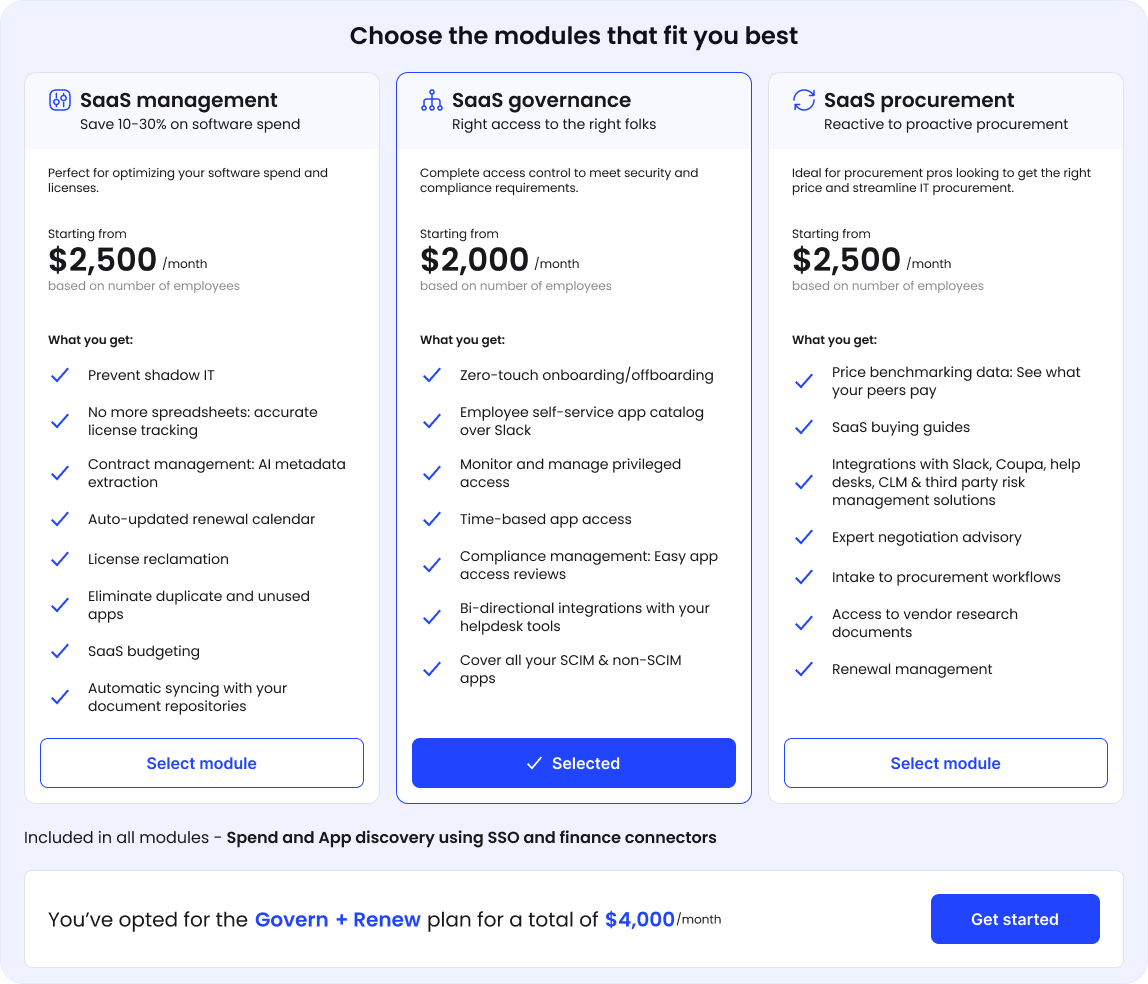
2. Sprinto
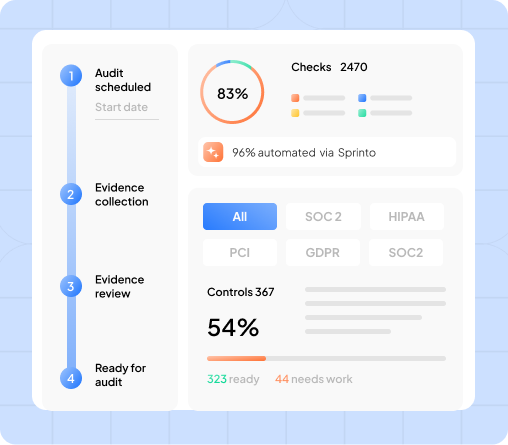
Sprinto is a cloud-based compliance automation platform built for fast-scaling companies aiming to achieve and maintain frameworks like SOC 2, ISO 27001, HIPAA, and GDPR. It’s particularly popular among startups and mid-sized tech firms looking to get audit-ready with minimal manual effort.
Key Features:
Sprinto offers a unified compliance dashboard for real-time visibility into risk and control posture. It automates vendor risk analysis, evidence collection, and supports multiple frameworks simultaneously. Risk mitigation templates and integrations with cloud tools streamline compliance workflows end to end.
Pros:
- Great for early-stage and growing companies that need quick time-to-compliance.
- Prebuilt templates and workflows make onboarding easy.
- Strong integration ecosystem across cloud, HR, and ticketing systems.
Cons:
- Less suited for complex enterprise-level compliance needs.
- Limited flexibility in creating custom control logic.
- Some niche integrations may require manual workarounds.
Pricing:
Sprinto offers custom pricing based on company size and compliance goals. While it doesn’t publicly share pricing, typical plans for SOC 2 readiness start around $5,000–$15,000/year, with additional costs for multi-framework support.
3. UpGuard
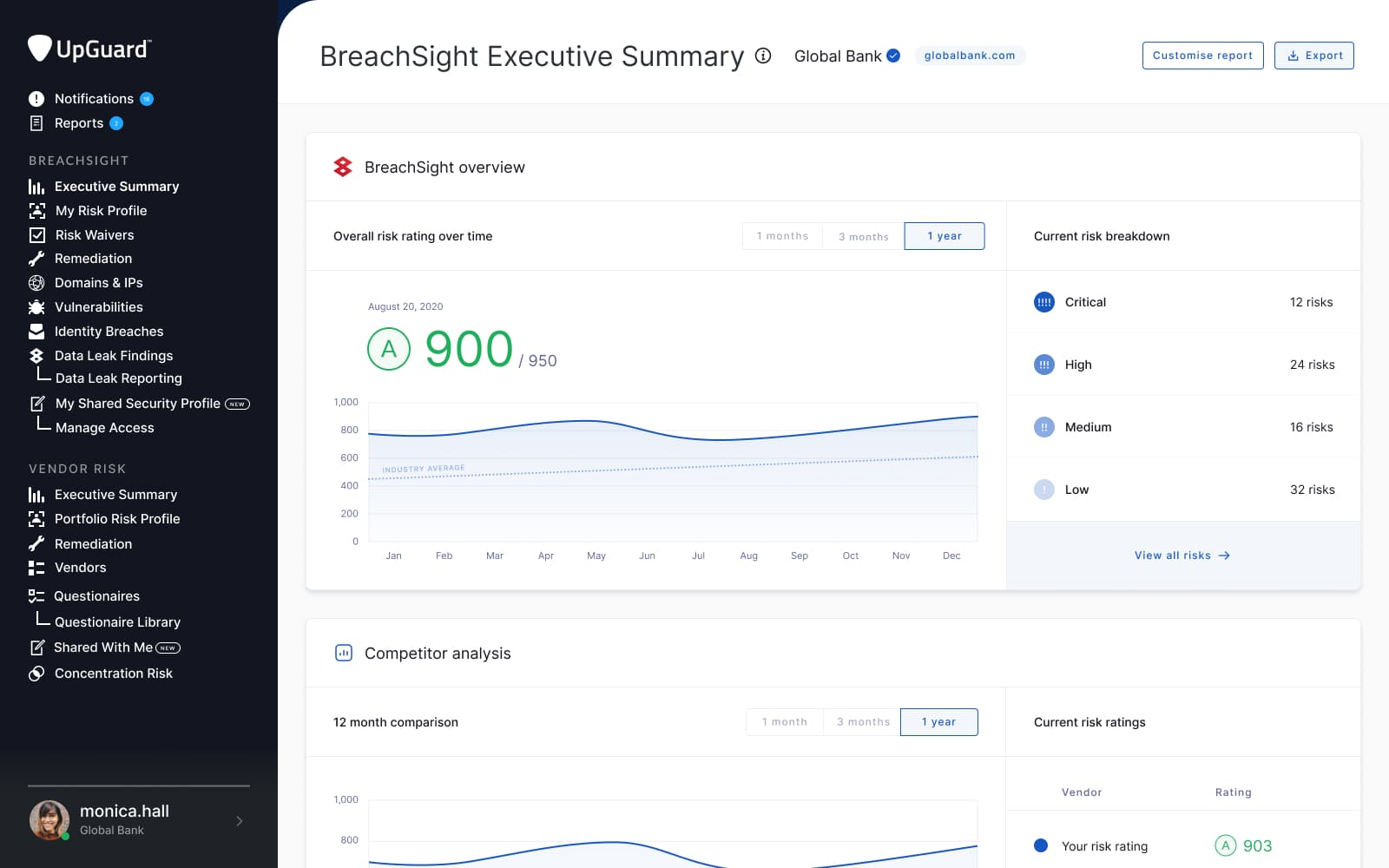
UpGuard is a cybersecurity-focused risk management platform designed to help businesses assess, monitor, and mitigate third-party risks. It’s widely adopted for vendor risk assessments, attack surface monitoring, and breach detection, making it ideal for companies prioritizing external cyber hygiene.
Key Features:
UpGuard provides cyber risk ratings for third-party vendors to assess their security posture at a glance. It offers real-time breach detection, dark web monitoring, and attack surface analysis to stay ahead of vulnerabilities. Automated security questionnaires speed up vendor onboarding and compliance reviews.
Pros:
- Strong at identifying and tracking vendor-related cyber threats.
- Easy-to-read risk scores make vendor comparison simple.
- Scalable for organizations managing hundreds of third-party relationships.
Cons:
- Focuses more on external threats, less coverage for internal controls.
- Limited support for broader compliance frameworks like SOC 2 or ISO 27001.
- Pricing can become steep as the number of monitored vendors increases.
Pricing:
UpGuard offers tiered pricing based on the number of vendors and features needed. While custom quotes are available, entry-level plans start at approximately $7,000–$10,000/year, with enterprise plans scaling significantly higher based on usage.
4. LogicManager
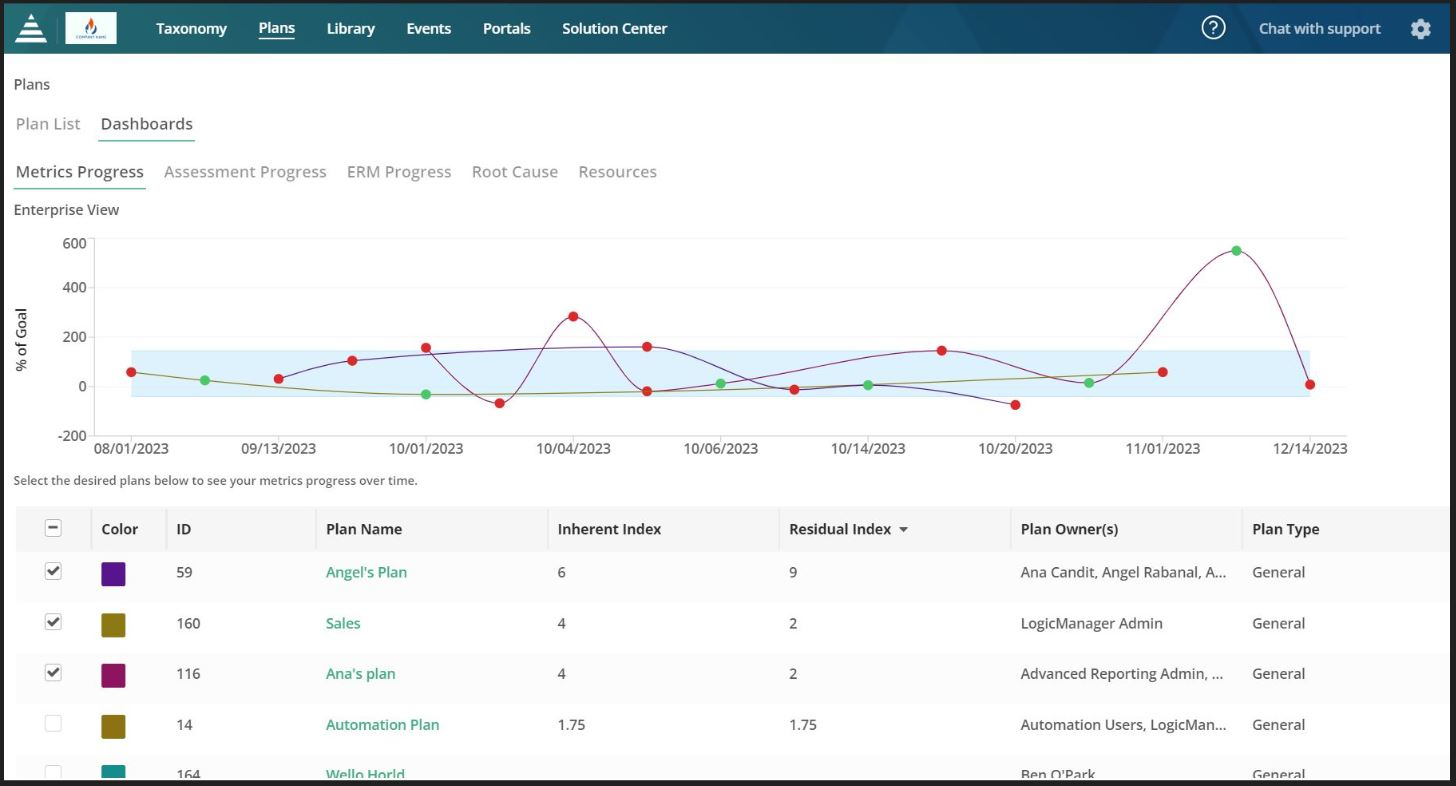
LogicManager is an enterprise-grade supplier risk management software and performance management platform designed to handle a wide range of third-party risks. Known for its flexibility and strong GRC (Governance, Risk, and Compliance) capabilities, it supports organizations in regulated industries to proactively manage vendor risk, performance, and compliance.
Key Features:
This supplier risk management software offers seamless integrations with ERM and GRC systems to centralize risk visibility. Customizable vendor assessment forms allow tailored evaluations based on risk tier, industry, or business impact. LogicManager also tracks regulatory changes and updates controls to help stay compliant with evolving standards.
Pros:
- Highly configurable platform suited for complex, industry-specific needs.
- Strong regulatory tracking capabilities make it valuable for compliance-heavy sectors.
- Centralized view of third-party and enterprise risks.
Cons:
- Steeper learning curve due to the platform’s depth and customization.
- May be overkill for small and mid-sized businesses with limited risk programs.
- Interfaces can feel dated compared to newer, more modern tools.
Pricing:
LogicManager offers custom pricing based on organizational requirements and module selection. While pricing is not publicly listed, enterprise packages typically start around $15,000/year, with scalability based on user count and functionality.
5. Secureframe
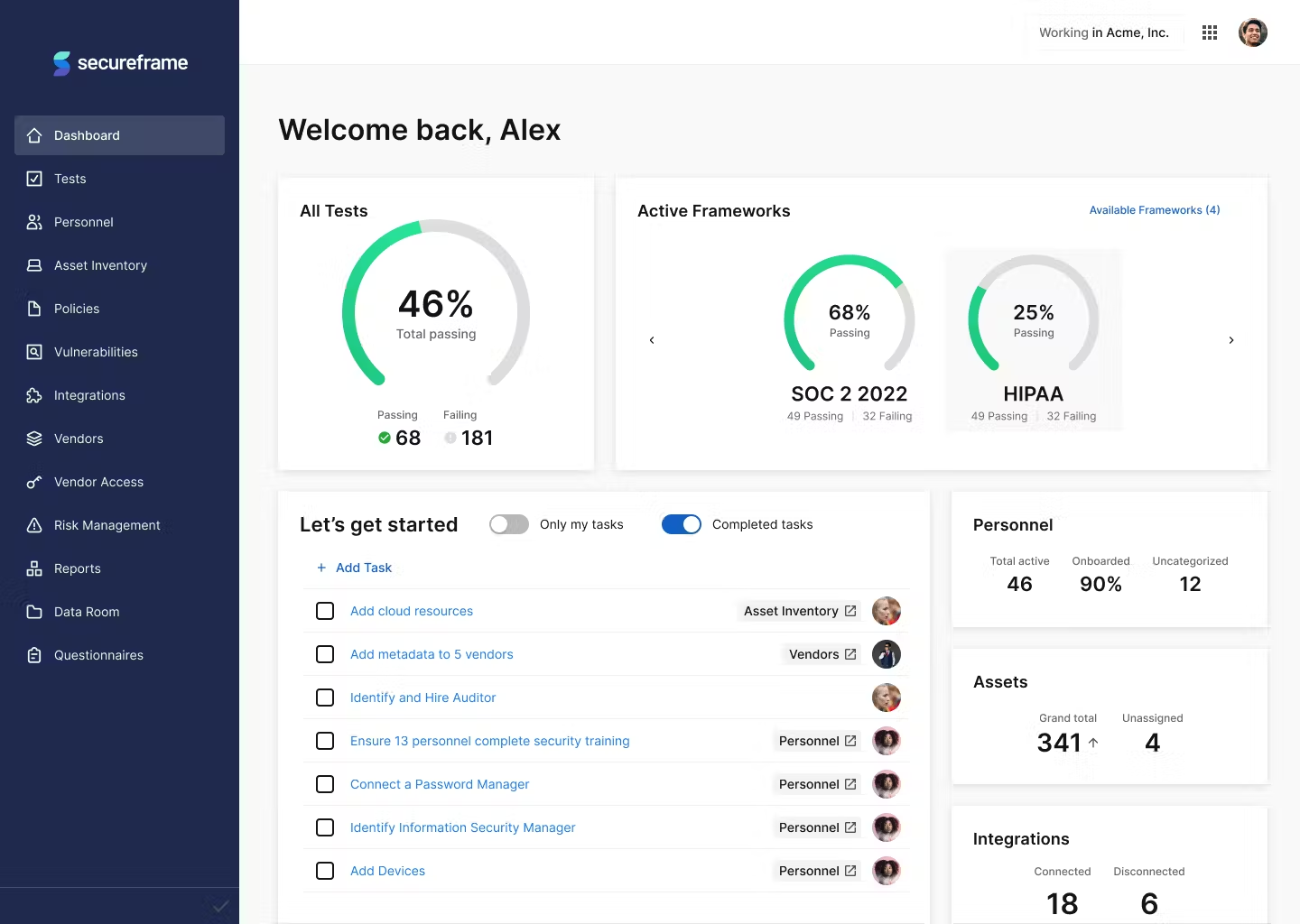
Secureframe is a powerful compliance automation and supplier risk management software platform built for fast-growing tech companies seeking certifications like SOC 2, ISO 27001, and HIPAA. It automates evidence collection and simplifies vendor due diligence to streamline the audit process.
Key Features:
Secureframe automates vendor risk assessments and documentation workflows. As a supplier risk management software, it enforces policies through built-in templates and tracks control effectiveness in real time. The platform also ensures you remain continuously audit-ready across frameworks.
Pros:
- Fast deployment and easy-to-navigate interfaces.
- Rich library of policy templates and checklists.
- Strong support and guided onboarding.
Cons:
- Limited flexibility in custom workflows.
- Can get expensive for organizations managing large vendor ecosystems.
- Focuses mainly on compliance rather than broader enterprise risk management.
Pricing:
Pricing starts around $10,000/year, depending on the number of users, frameworks, and vendor integrations required. Custom quotes are provided for advanced packages.
6. BitSight

BitSight is a security ratings and supplier risk management software platform that provides continuous monitoring and risk scoring for vendors. It helps businesses quantify cybersecurity risk across global supply chains with external threat intelligence and performance analytics.
Key Features:
This supplier risk management software offers objective security performance scores for each vendor. Real-time alerts notify you of new vulnerabilities or breaches. BitSight also integrates with SIEM tools to feed risk data into existing workflows.
Pros:
- Clear, actionable scoring model for vendor comparison.
- Excellent global supplier visibility.
- Helps prioritize remediation based on risk impact.
Cons:
- Doesn’t offer in-depth compliance management features.
- Limited visibility into internal controls or documentation.
- Pricing is on the higher end for small teams.
Pricing:
Starts at approximately $20,000/year, depending on number of vendors monitored and depth of reporting required. Enterprise plans scale up significantly.
7. Vanta
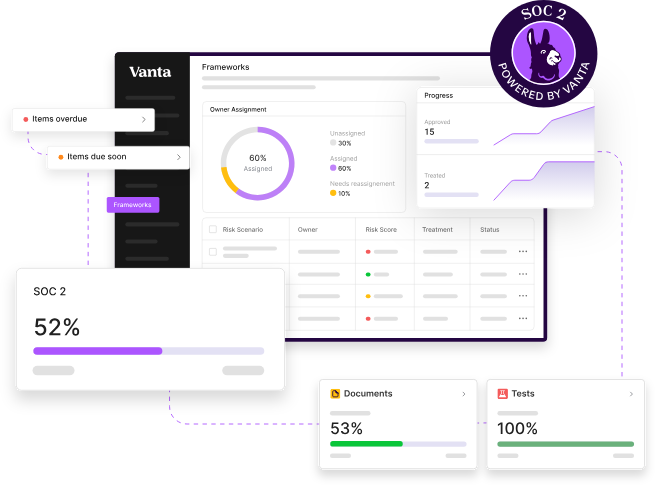
Vanta helps companies achieve SOC 2, ISO 27001, HIPAA, and other compliance standards quickly, with continuous monitoring of vendor security and controls, making it a popular supplier risk management software choice for startups and mid-sized firms looking for a fast path to audit readiness.
Key Features:
Vanta automates vendor questionnaires, document collection, and audit trails. As a supplier risk management software, it monitors vendor compliance status and alerts you to risks or breaches. Audit tracking and evidence management are also streamlined via integrations with cloud and project tools.
Pros:
- Fast setup and prebuilt compliance templates.
- Strong partner network with auditors and consultants.
- Continuous monitoring reduces manual work.
Cons:
- Vendor risk management is not as in-depth as dedicated platforms.
- Fewer customization options in templates and workflows.
- May not scale well for highly complex vendor ecosystems.
Pricing:
Pricing starts at around $8,000–$10,000/year, with additional costs for multi-framework support and extended monitoring.
8. OneTrust
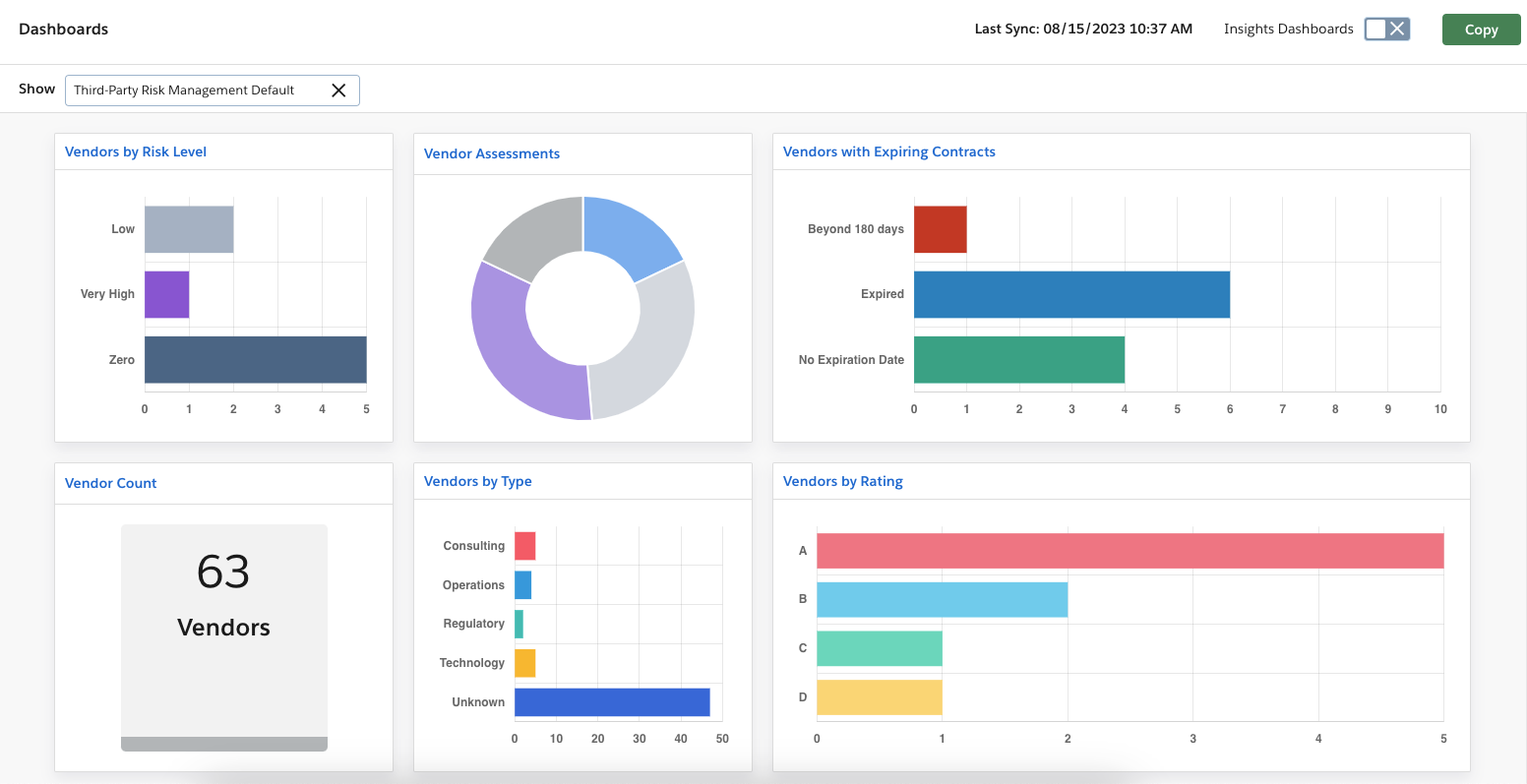
OneTrust is a widely adopted supplier risk management software that combines vendor risk management, data privacy compliance, and ESG tracking. It’s ideal for large enterprises handling complex third-party relationships and regulatory obligations across regions.
Key Features:
This supplier risk management software offers full lifecycle third-party management, from onboarding and risk scoring to offboarding. Privacy governance tools help enforce data protection policies like GDPR and CCPA. ESG assessment modules add transparency for sustainability and ethics programs.
Pros:
- One-stop platform for vendor, privacy, and ESG risks.
- Highly customizable workflows and reporting.
- Scalable to meet enterprise governance needs.
Cons
- Complex platform with a steeper learning curve.
- Costly for mid-sized organizations.
- May feel overwhelming if used only for vendor risk.
Pricing:
Enterprise-level pricing varies widely but typically starts at $30,000/year or more, depending on the modules and user base.
9. MetricStream
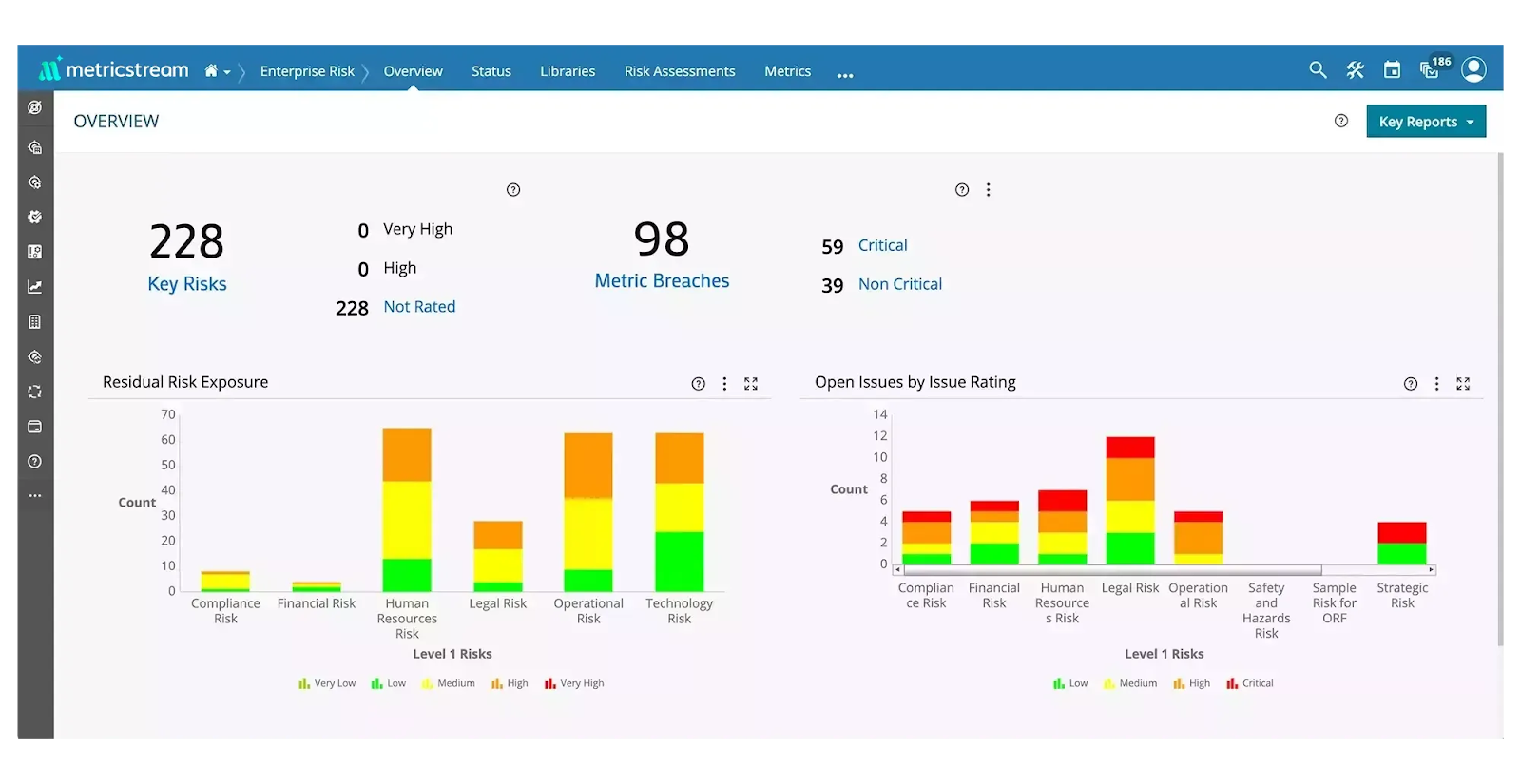
MetricStream offers a full-featured GRC solution with specialized tools for supplier risk and performance management, making it one of the most comprehensive supplier risk management software options for compliance-heavy industries like healthcare, finance, and pharmaceuticals.
Key Features:
This supplier risk management software provides regulatory intelligence to stay aligned with industry laws and standards. Integrated risk and compliance dashboards help track vendor issues in real time. It also supports business continuity planning to reduce supply chain disruptions.
Pros:
- Deep expertise in regulated sectors.
- End-to-end GRC and vendor risk capabilities.
- Powerful reporting and audit support.
Cons:
- Complex to implement and configure.
- May require dedicated admins or consultants to manage.
- Interfaces can be less intuitive for casual users.
Pricing:
Pricing is custom and generally enterprise-level, with packages starting at $25,000–$50,000/year, depending on use cases and industry.
How to Choose the Best Supplier Risk Management Software
Evaluate Features Against Risk and Compliance Goals
Not all tools will suit every organization. List your key goals (e.g., cybersecurity, financial stability, or ESG compliance) and match tools that specialize in these areas.
Consider Ease of Integration and Workflow Automation
Ensure the tool integrates with your existing ERP, procurement, or compliance systems. Workflow automation saves countless hours during audits or risk resolution.
Prioritize Tools with Real-Time Monitoring
Tools that offer continuous vendor monitoring and real-time alerts are crucial in a dynamic risk landscape where threats evolve daily.
Conclusion
With global supply chains becoming increasingly complex, relying on outdated spreadsheets or manual vendor reviews is risky and inefficient. The right supplier risk management software not only minimizes disruptions but also drives compliance, performance, and cost savings across your vendor ecosystem.
Whether you’re scaling your vendor base, navigating new regulations, or facing stricter audits, platforms like CloudEagle.ai, Sprinto, BitSight, and OneTrust offer a much-needed advantage.
Start by evaluating your current vendor risk processes, shortlist tools aligned with your compliance strategy, and deploy a solution that gives you real-time visibility into the entire supplier lifecycle.
FAQs
1. What is supplier management software?
Supplier management software helps businesses manage, evaluate, and monitor their vendors throughout the supply lifecycle to reduce risks and improve performance.
2. What software is used for risk management?
Popular supplier risk management tools include Sprinto, BitSight, UpGuard, and CloudEagle.ai. These platforms automate compliance, vendor assessment, and risk mitigation.
3. What is SCRM software?
SCRM (Supply Chain Risk Management) software identifies, monitors, and mitigates risks across your supply chain, covering financial, cyber, and compliance threats.
4. What is the risk management process for suppliers?
The process includes risk identification, assessment, prioritization, mitigation planning, continuous monitoring, and periodic reviews.
5. How to mitigate supply risk?
Mitigate supply risk by conducting due diligence, using supplier risk management software, diversifying suppliers, and implementing proactive risk alerts.
6. What are the 4 types of risk mitigation?
The four strategies are: Risk Avoidance, Risk Reduction, Risk Sharing (e.g., insurance), and Risk Retention (accepting the risk when minimal).

%201.svg)








.avif)




.avif)
.avif)




.png)









